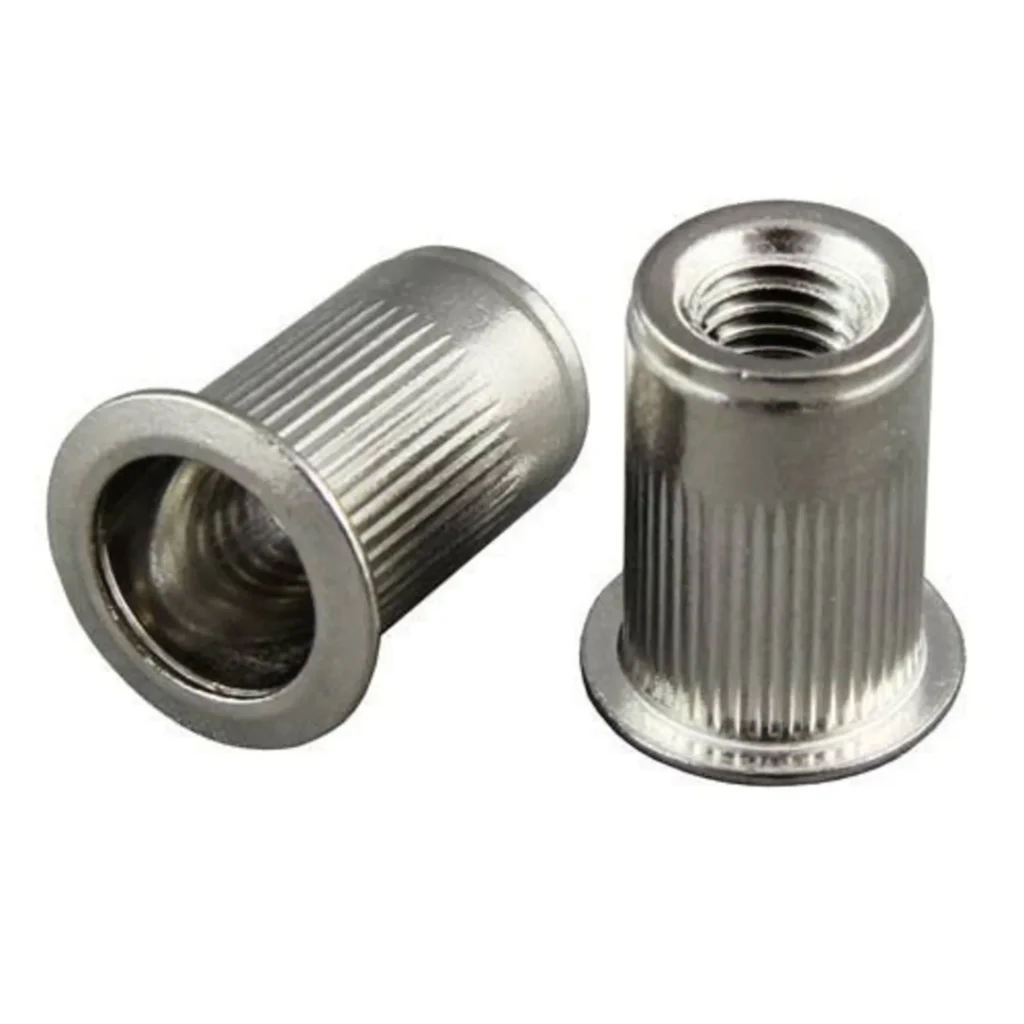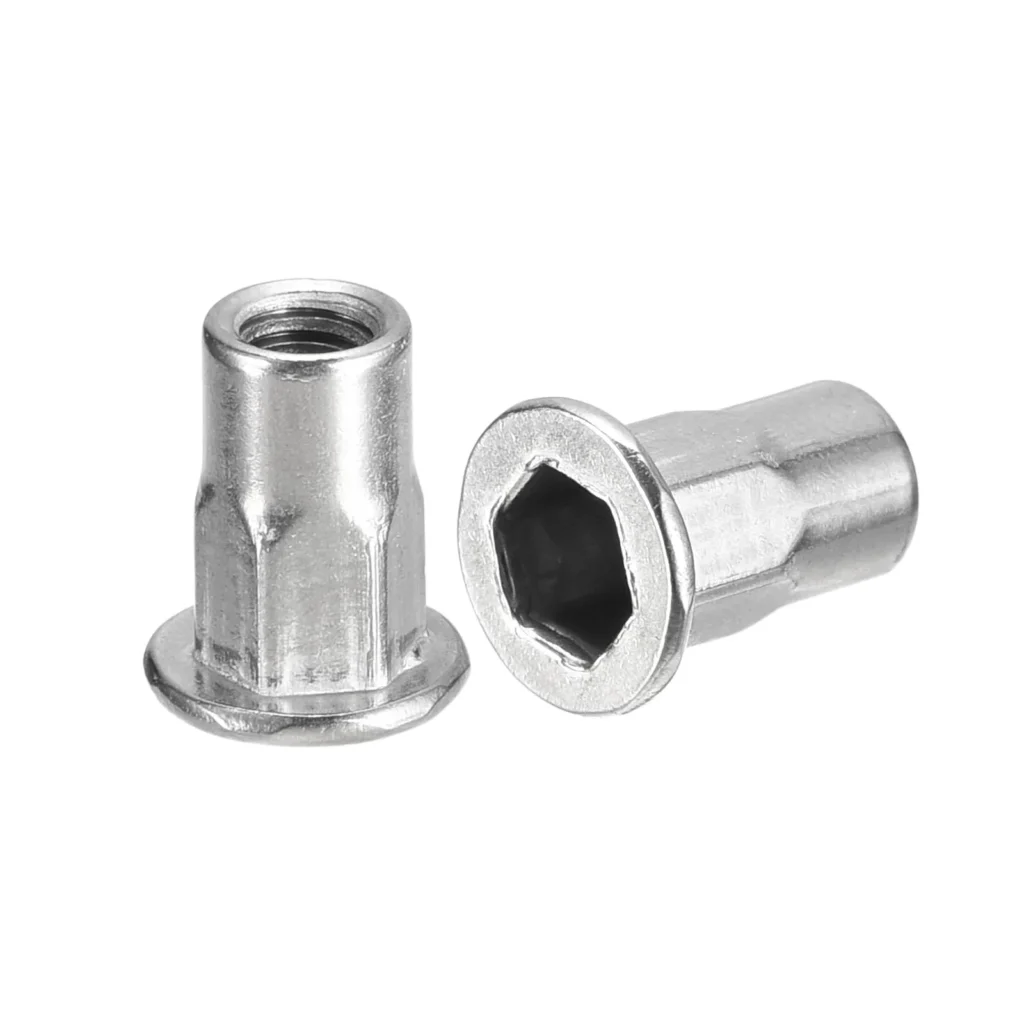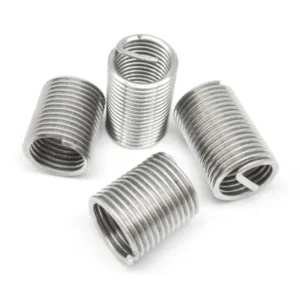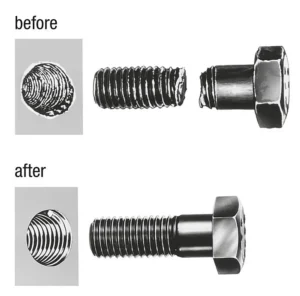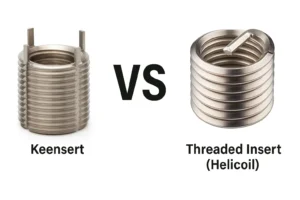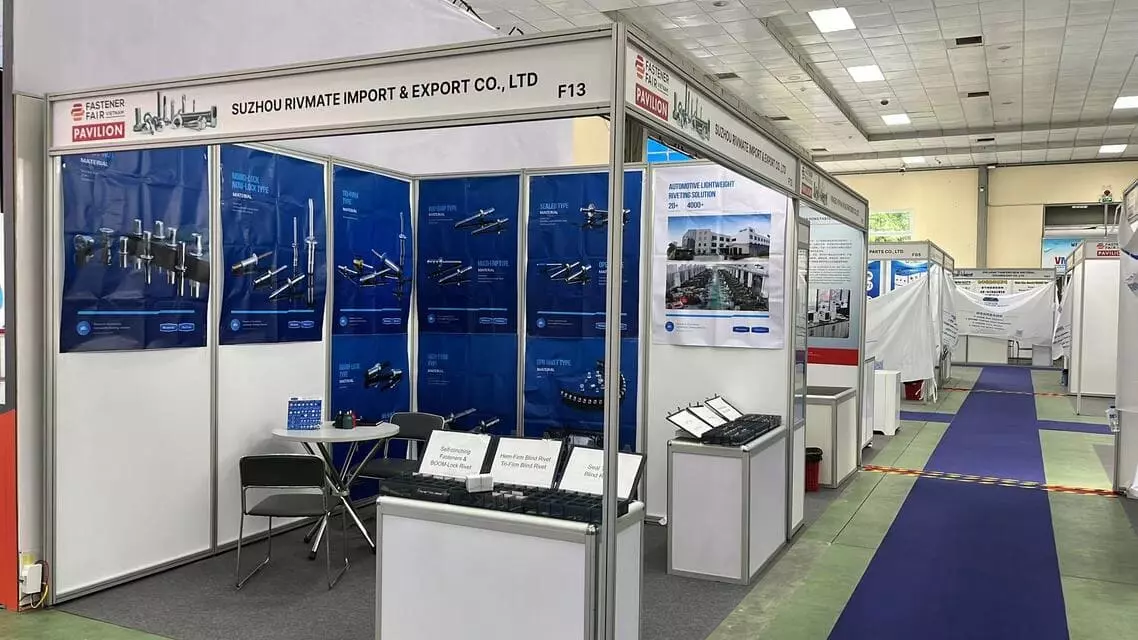How Strong Are Steel Rivnuts?
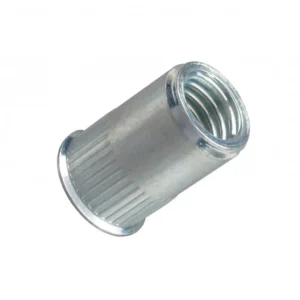
Leading Rivet Nut Manufacturer and Supplier in China
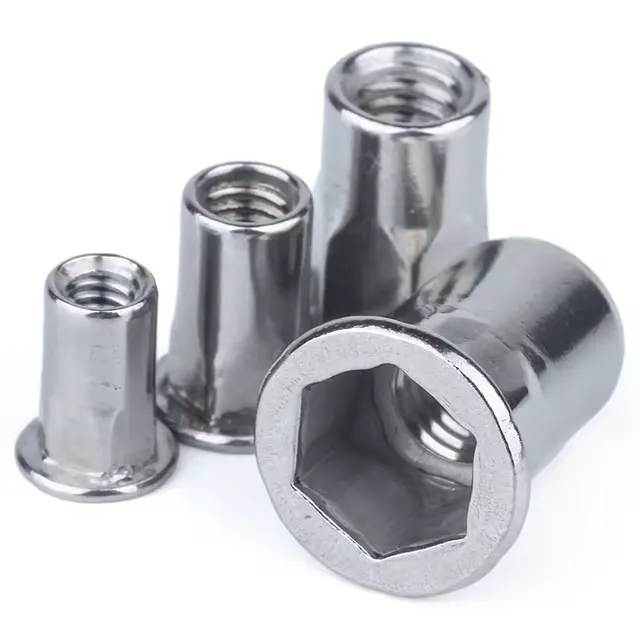
When it comes to fastening solutions in demanding industrial applications, strength and reliability are non-negotiable. Steel rivnuts have become a go-to choice in sectors such as automotive, aerospace, machinery, and heavy equipment—thanks to their superior mechanical properties. But how strong are steel rivnuts, really? This article explores the tensile, shear, and torque resistance of steel rivnuts, and how their design, material, and installation quality directly affect performance in high-load and high-vibration environments.
Table of Contents
Why Should You Care About the Strength of Steel Rivnuts?
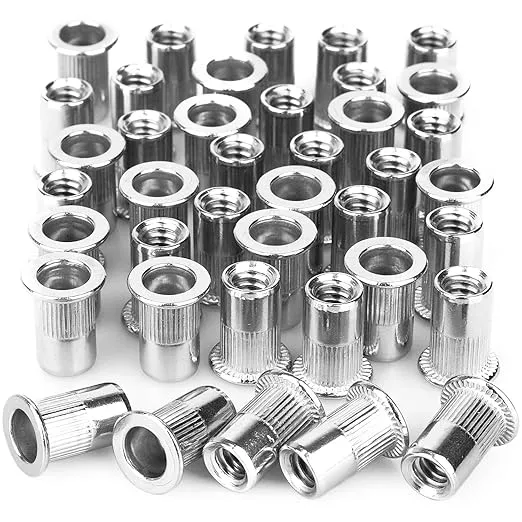
In industrial manufacturing and assembly, rivet nuts (Rivnuts) are a widely used solution for blind hole fastening, especially when access to the backside of the material is not possible. Understanding their strength is essential for ensuring structural integrity and long-term performance.
Widely Used Across Industries:
Rivet nuts are commonly used in sectors such as automotive, machinery, rail transportation, electrical enclosures, home appliances, and even aerospace. They allow for quick creation of threaded connections in thin-walled structures like sheet metal, plastics, and composite panels.
Strength Determines Reliability:
In real-world applications, rivet nuts are often subjected to tensile forces, shear loads, or vibrational stress. If their strength is inadequate, it can lead to thread stripping, pull-out failures, or rotation under load—jeopardizing the stability and safety of the entire assembly.
The Advantages of Steel Rivnuts:
Compared to aluminum or stainless steel variants, steel rivet nuts offer significantly higher mechanical strength and deformation resistance. They are ideal for demanding, load-bearing, and vibration-prone environments. As the need for secure and reliable fastening increases, steel Rivnuts have become the mainstream choice in many industrial applications.
How Do Steel Rivnuts Affect Strength?
1. What Are the Common Types of Steel Rivnuts?
Steel rivet nuts (Rivnuts) come in various structural forms based on their outer body shape and end configuration. Each type offers different mechanical characteristics and is suited for specific applications:
- Smooth surface without anti-rotation features
- Relies solely on clamping force for fixation
- Suitable for general low-load connections; cost-effective but offers limited resistance to rotation
- Features vertical or spiral knurled patterns on the outer wall
- Enhances friction with the base material, improving anti-rotation performance
- Ideal for applications with mild vibrations or torsion, such as electrical enclosures
- Hexagonal outer shape designed for use with pre-punched hex holes
- Offers excellent resistance to rotation, suitable for high-torque and high-load applications
- Commonly used in automotive chassis, machinery, and vibration-prone environments
d. Open End vs. Closed End
- Open End: Allows bolts to pass completely through the nut; suitable for through-hole applications or when extra thread length is required
- Closed End: Sealed bottom prevents entry of dust, moisture, or debris; provides better corrosion resistance and sealing
- While these don’t significantly impact mechanical strength, they affect environmental adaptability
2. How Do They Affect Strength?
The design and structure of steel rivnuts directly influence their performance in terms of pull-out resistance, torque resistance, and load-bearing capacity:
a. Torque Resistance
- Ranking: Hex Body > Knurled Body > Plain Round Body
- Hex-shaped bodies offer the highest anti-rotation capability, especially important under high torque or frequent disassembly
b. Pull-Out Strength
- Closed-end nuts and models with thicker walls generally provide better pull-out performance
- Knurled and hex types also improve grip in certain materials, which contributes to enhanced tensile strength
c. Clamping Stability
- Knurled and hex designs perform better in high-vibration or impact-prone environments
- Plain round bodies may loosen over time in soft base materials due to insufficient friction
d. Environmental Suitability
- Closed-end types are more suitable for outdoor or sealed environments
- Hex bodies are ideal for high-strength mechanical connections, while knurled bodies fit medium-strength applications
How Strong Are Steel Rivnuts?
As an essential fastener in industrial applications, the mechanical strength of steel rivnuts directly determines the integrity and reliability of the connection. Below is a detailed explanation of three critical strength indicators and the influencing factors for steel rivnuts.
Tensile strength refers to the maximum axial force a rivnut can withstand before being pulled out from the base material. It is one of the most crucial parameters to ensure joint reliability and safety.
Key Influencing Factors:
Base Material Strength: For example, steel substrates typically offer higher load-bearing capacity than aluminum or plastic due to their superior hardness and strength.
Thread Size: Larger thread diameters (e.g., M8 compared to M6) provide higher tensile strength due to increased contact area and more even stress distribution.
Wall Thickness & Clamping Force: Thicker rivnut walls result in stronger bodies. Proper installation ensures sufficient clamping force, which prevents loosening and enhances tensile performance.
Reference Table: Tensile Strength of Common Metric Steel Rivnuts
| Thread Size (Metric) | Tensile Strength (N) | Tensile Strength (kgf) |
| M3 | 1500 – 2500 N | 150 – 250 kgf |
| M4 | 3000 – 5000 N | 300 – 500 kgf |
| M5 | 5000 – 8000 N | 500 – 800 kgf |
| M6 | 6000 – 10000 N | 600 – 1000 kgf |
| M8 | 10000 – 15000 N | 1000 – 1500 kgf |
| M10 | 15000 – 22000 N | 1500 – 2200 kgf |
| M12 | 22000 – 30000 N | 2200 – 3000 kgf |
Notes:
- Material: The values above are typical for carbon steel rivnuts. The actual strength varies depending on the material—stainless steel, high-strength alloy steel, etc.
- Installation Quality: Proper hole size, base material thickness, and installation tools greatly influence tensile strength.
- Safety Margin: Design engineers should include a safety factor, typically ranging from 20% to 50%, based on application criticality.
Application Examples:
- Automotive chassis structures: M8 steel rivnuts are often used where the design requires a tensile strength of at least 12,000 N to ensure load-bearing safety.
- Electronics enclosures: Commonly use M6 rivnuts, which are sufficient for general fastening and vibration resistance, with relatively lower tensile requirements.
2. Shear Strength
Shear strength refers to the maximum load a rivnut can withstand without breaking or failing due to shear forces applied perpendicular to its axis. This property is especially critical for joints subjected to lateral forces, as it directly impacts the stability and safety of the connection.
Key Influencing Factors
- Material Strength: Steel rivnuts exhibit significantly higher shear strength than aluminum or plastic inserts due to their superior hardness and toughness.
- Wall Thickness: Thicker walls provide a larger load-bearing area, resulting in improved shear performance.
- Embedment Depth & Installation Quality: Proper embedment depth and a standard-compliant installation process help distribute shear loads evenly and enhance overall strength.
Reference Table: Shear Strength of Common Metric Steel Rivnuts
| Thread Size (Metric) | Shear Strength Range (N) | Shear Strength Range (kgf) |
| M3 | 1000 – 1800 N | 100 – 180 kgf |
| M4 | 2000 – 3500 N | 200 – 350 kgf |
| M5 | 3500 – 6000 N | 350 – 600 kgf |
| M6 | 4000 – 7000 N | 400 – 700 kgf |
| M8 | 7000 – 11000 N | 700 – 1100 kgf |
| M10 | 11000 – 16000 N | 1100 – 1600 kgf |
| M12 | 16000 – 22000 N | 1600 – 2200 kgf |
Notes:
- Material: These values are typically based on carbon steel rivnuts. High-strength alloys or hardened steel will deliver even higher shear capacity.
- Installation Quality: Optimal performance is achieved only when the hole size, grip range, and installation method meet the manufacturer’s standards.
- Safety Margin: It is recommended to allow a safety margin of at least 20% to 50% in design applications.
Application Examples
- In lateral connections of industrial machinery, M8 steel rivnuts must provide sufficient shear strength to withstand vibration and side loads, preventing loosening or failure.
- In automotive chassis and railway vehicles, the shear strength of rivnuts plays a direct role in structural safety and long-term durability.
3. Torque-to-Turn Resistance
Torque-to-turn resistance refers to the maximum torque a rivnut can withstand during the installation process before it begins to spin or slip inside the base material. This performance metric is critical for maintaining fastening stability, preventing loosening, and ensuring long-term vibration resistance.
Key Influencing Factors:
- Rivnut Body Design: Shapes like hexagonal (Hex Body) or knurled (Knurled Body) enhance mechanical interlock with the base material, significantly increasing torque resistance.
- Material Hardness and Surface Finish: Harder materials and coatings like zinc plating or DACROMET® can improve friction and reduce the risk of spinning.
- Base Material and Hole Fit: A tightly matched hole diameter and suitable base material hardness help optimize torque-to-turn resistance.
- Installation Technique: Using the correct installation torque and appropriate tools reduces the risk of spinning during installation.
Typical Torque-to-Turn Resistance for Metric Steel Rivnuts
| Thread Size (Metric) | Torque-to-Turn Range (Nm) |
| M3 | 2 – 5 Nm |
| M4 | 4 – 8 Nm |
| M5 | 6 – 12 Nm |
| M6 | 10 – 20 Nm |
| M8 | 20 – 35 Nm |
| M10 | 30 – 50 Nm |
| M12 | 40 – 65 Nm |
Notes:
- Design Variations: Hex and knurled rivnuts generally provide higher torque resistance than plain round types.
- Installation Conditions: Optimal torque resistance is achieved when rivnuts are installed using the correct tool and within the manufacturer-recommended torque range.
- Application Suitability: Rivnuts with high torque-to-turn resistance are ideal for vibration-prone environments or where frequent disassembly is expected.
Application Examples
- In high-vibration environments like automotive engine compartments, torque-resistant rivnuts prevent loosening caused by constant movement.
- In machinery and electronic enclosures, high torque-to-turn resistance ensures long-term fastening reliability and reduces the need for maintenance.
Steel Rivnuts vs Aluminum vs Stainless Steel: How Do They Compare in Strength?
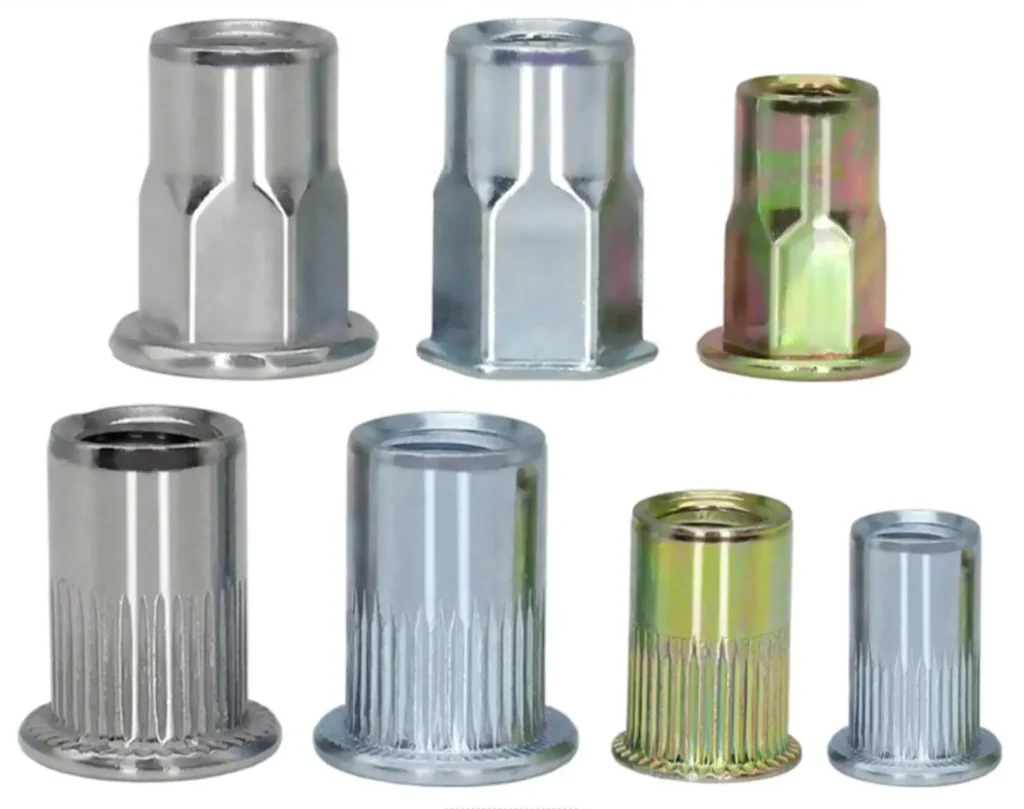
When selecting rivnut materials, steel, aluminum, and stainless steel are the three most common options. Each has its own strengths and limitations in terms of mechanical performance, corrosion resistance, and application environments. Understanding these differences can help you choose the most suitable product for your specific needs.
1. Tensile Strength Comparison
Steel Rivnuts: Offer the highest tensile strength, making them ideal for applications requiring high load-bearing capability. Common carbon steel rivnuts, especially after heat and surface treatments, can reach or exceed 5000 N in tensile strength. They are best suited for heavy-duty applications and structural connections.
Aluminum Rivnuts: Have lower tensile strength, typically used in lightweight or low-load scenarios. Due to the material’s limited strength, they are suitable for electronics, light machinery, or weight-sensitive applications.
Stainless Steel Rivnuts: Provide medium to high tensile strength, depending on the stainless steel grade (e.g., 304, 316). They offer reliable mechanical performance while maintaining excellent corrosion resistance, ideal for medium-load applications in more demanding environments.
2. Shear Strength Comparison
Steel Rivnuts: Provide the highest shear strength, able to resist lateral loads effectively and ensure structural safety.
Aluminum Rivnuts: Lower shear strength, appropriate for connections where shear load is minimal or non-critical.
Stainless Steel Rivnuts: Offer good shear strength, better than aluminum but typically slightly lower than carbon steel. Suitable for corrosive environments that also demand moderate mechanical strength.
3. Corrosion Resistance Comparison
Steel Rivnuts: Naturally prone to rust and require protective coatings such as zinc plating, DACROMET, or chromium plating to improve corrosion resistance. Best used indoors or in environments with proper protective measures.
Aluminum Rivnuts: Benefit from a natural oxide layer, giving them moderate corrosion resistance. Suitable for general industrial and non-aggressive outdoor environments.
Stainless Steel Rivnuts: Provide the best corrosion resistance, particularly 316 stainless steel, which performs exceptionally well in marine, chemical, and harsh industrial environments. Offers the longest service life among the three.
Summary: Steel Rivnuts vs Aluminum vs Stainless Steel
Steel rivnuts are the go-to choice for high-strength and heavy-load applications but require anti-corrosion treatments.
Aluminum rivnuts are cost-effective and ideal for lightweight designs, though limited in strength.
Stainless steel rivnuts strike a balance between mechanical strength and corrosion resistance, making them ideal for medium to high strength requirements in aggressive environments.
What Other Factors Can Affect the Strength of Steel Rivnuts?
In addition to the material and structural design of the rivnut itself, several external factors can significantly influence its final strength performance and application effectiveness:
①. Proper Installation Method and Tools
Using the correct installation tools—such as manual rivet tools, pneumatic rivet guns, or hydraulic riveters—ensures full deformation of the rivnut and optimal clamping force.
Proper torque control during installation is critical. Over-installation may lead to excessive deformation or cracking of the rivnut, while under-installation results in insufficient clamping, causing looseness.
Poor installation practices directly reduce joint strength, load-bearing capacity, and service life.

②. Base Material and Thickness Within Recommended Grip Range
Rivnuts are designed to clamp within a specific thickness range of the base material. Installing them outside this range can lead to poor clamping or damage to the base material.
The strength and elasticity of the base material also influence the rivnut’s performance. Softer materials like plastics or aluminum alloys require extra caution to avoid material deformation.
Choosing the correct rivnut type and grip range for the base material is essential for a secure and stable connection.
③. Hole Diameter and Tolerance Matching
a. Hole Size Requirements
Hole diameter should strictly follow the installation hole size specified by the rivnut manufacturer—typically slightly larger than the rivnut’s outer body for easy insertion without looseness.
For example, a standard M6 rivnut usually requires a recommended hole diameter of 11.0 mm ± 0.05 mm.
Oversized holes (more than +0.1 mm) may cause looseness after installation, reducing clamping force and overall strength, and can even lead to thread stripping.
Undersized holes may prevent insertion and forceful installation can deform the rivnut or damage tools, affecting assembly efficiency.
b. Hole Roundness and Surface Precision
Hole roundness and flatness are equally important. Burrs, notches, or irregular shapes on the hole edge can lead to uneven force distribution and weak clamping.
It’s recommended to maintain hole roundness ≤ 0.02 mm, and deburr and chamfer the hole edges (chamfer angle 30°–45°, width 0.2–0.5 mm) to ensure smooth insertion and tight surface fit.
c. Impact of Hole Precision on Strength
Tests show that when hole diameter and shape meet standard tolerances, the rivnut’s tensile strength can increase by 10%–15%, along with improved shear and torque resistance.
Conversely, excessive hole deviation can lead to installation failure rates increasing by over 20% and a significantly higher risk of loosening or failure over time.
④. Correct Rivnut Type and Size Selection
Different application scenarios require different rivnut types, such as hex body, knurled body, closed-end, or open-end. Proper selection enhances performance in tensile and torque strength.
Choosing the correct thread size and grip range ensures proper fit with the mating bolt and prevents loosening or thread stripping.
Using the wrong type or size not only weakens the joint but also reduces assembly efficiency and durability.
Where Are Steel Rivnuts Commonly Used?
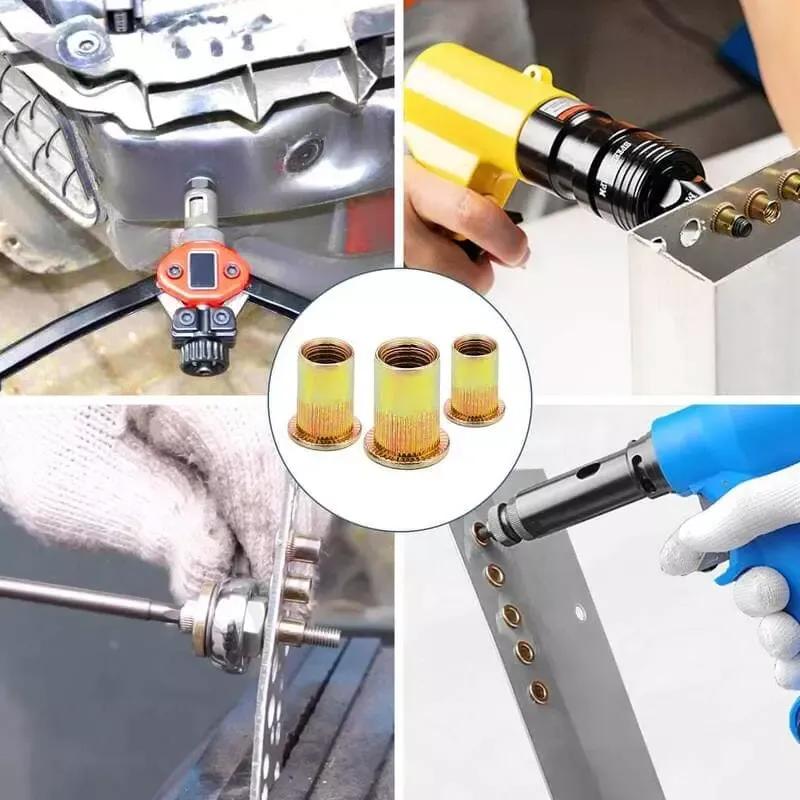
Automotive Chassis and Structural Connections
Steel rivnuts are widely used in automotive chassis and suspension systems to secure load-bearing components such as control arms and driveshaft brackets.
These connections must withstand dynamic loads and intense vibrations during vehicle operation, requiring rivnuts with high tensile strength and excellent vibration resistance.
The superior strength of steel rivnuts ensures secure and reliable joints, preventing thread loosening or failure under stress.
Machine Enclosures and Frame Connections
In industrial machinery such as robots and CNC machines, steel rivnuts are used to connect outer casings and internal support frames, ensuring structural integrity.
Their robust strength is especially critical in high-vibration and impact-prone environments, maintaining fastening stability over time.
Additionally, their wear and corrosion resistance makes them suitable for demanding or harsh conditions.
Railway Vehicle Sheet Metal Assemblies
Steel rivnuts are commonly applied in the exterior panels and internal sheet metal structures of rail vehicles.
These fasteners must withstand intense vibrations and alternating loads during high-speed operation, making high shear and tensile strength essential.
Corrosion resistance and long-term durability are also vital to ensure the safe operation of rail systems over extended service periods.
Industrial Cabinets and Wind Power Equipment
Steel rivnuts are used to secure electronic module brackets in industrial control cabinets and structural joints in wind power equipment.
They ensure strong and stable connections, preventing loosening caused by equipment vibration or environmental factors.
In outdoor applications like wind turbines, corrosion-resistant coated steel rivnuts are preferred to withstand harsh environmental conditions and extend service life.
Conclusion
Steel rivnuts play a crucial role in enhancing the overall strength of fastened joints due to their excellent mechanical properties. Firstly, the inherently high tensile and shear strength of steel allows rivnuts to withstand significant loads and impact forces, ensuring secure and reliable fastening. Additionally, various types of steel rivnuts—such as knurled body, hex body, open-end, and closed-end designs—further improve performance through structural enhancements, increasing resistance to spinning and pull-out forces. This ultimately boosts the durability and safety of the connection.
Moreover, selecting the correct specifications, material grade, and surface treatment—such as zinc plating or Dacromet coating for corrosion protection—is essential to maintaining long-term strength and stability in challenging environments. At the same time, proper installation practices and precise compatibility between the rivnut and the base material’s hole diameter and thickness significantly influence the final clamping force and resistance.
Do You Have Any Questions?
Let Us Solve Your Problem
Source High-Strength Steel Rivnuts in Bulk from Rivetfix
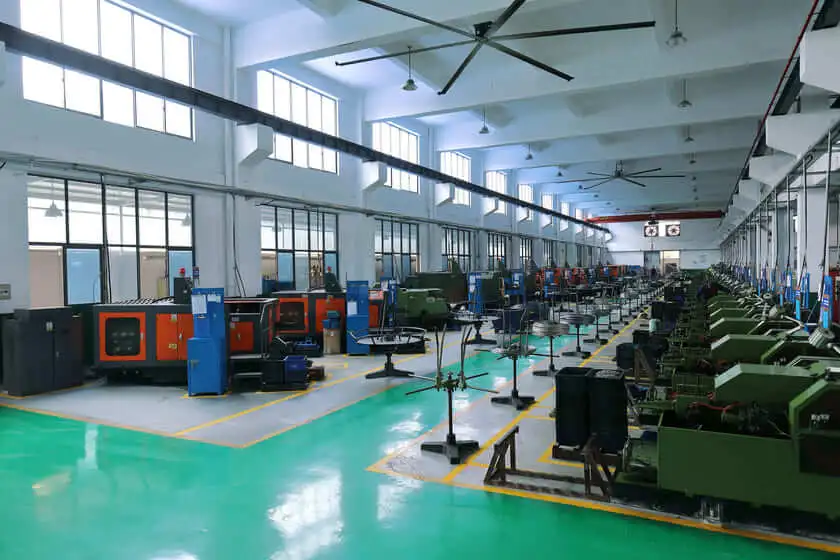
As a leading fastener manufacturer in China with more than 15 years in the industry, Rivetfix are committed to providing first-class quality fasteners and responsive services to the world. We offers a wide range of rivet nuts and clinch nuts designed to meet the unique demands of your projects. Rivetfix ensures you have the right solution for every application. Choose Rivetfix for versatile, cost-effective, and durable fastening solutions tailored to your specific needs. In addition, we can also provide customized rivet nuts service and clinch nuts according to your requirements.
Contact us now for more information and customization options on Rivet Nuts!
Get High Quality Rivet Nuts Quote!
Send Your Rivet Nut Request
For more than 20 years, Rivetfix has helped customers solve many rivet nuts sourcing needs and technical challenges.
Have a question? Contact us and we’ll provide you with the perfect solution.


